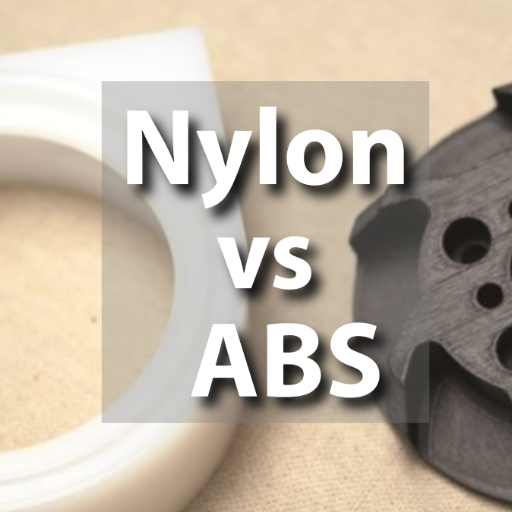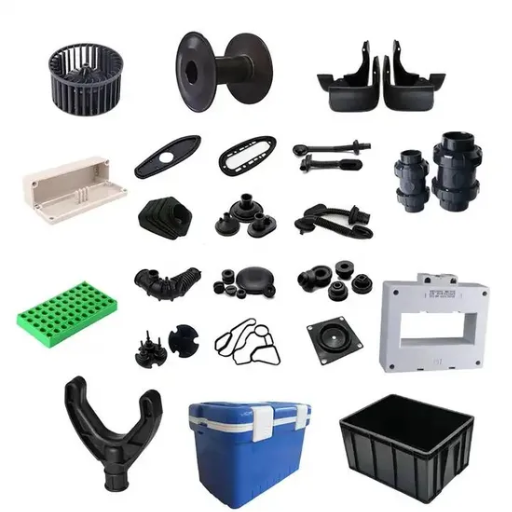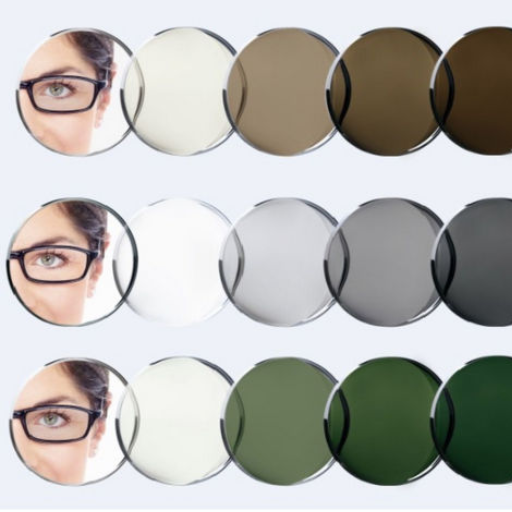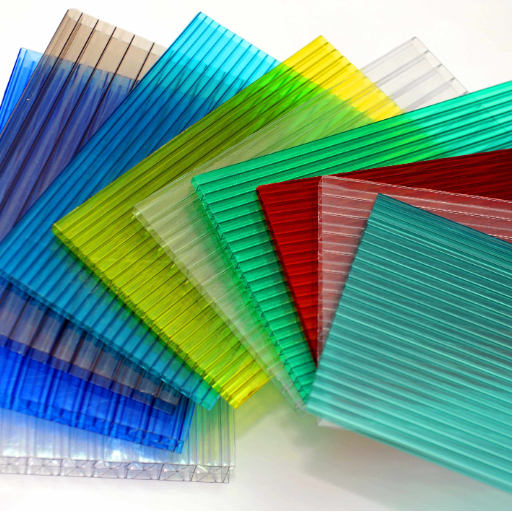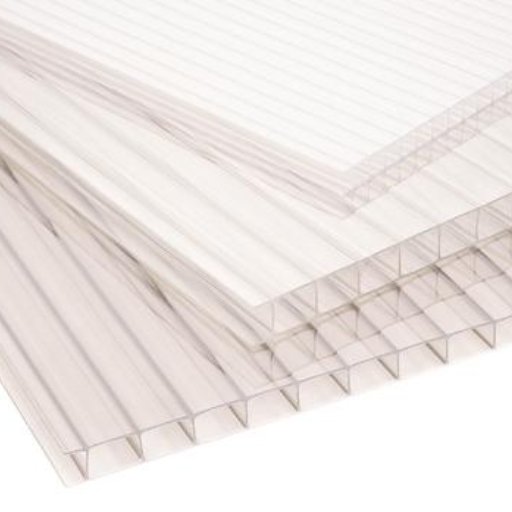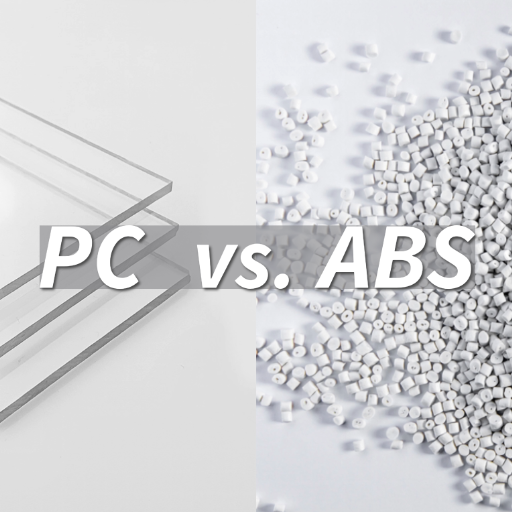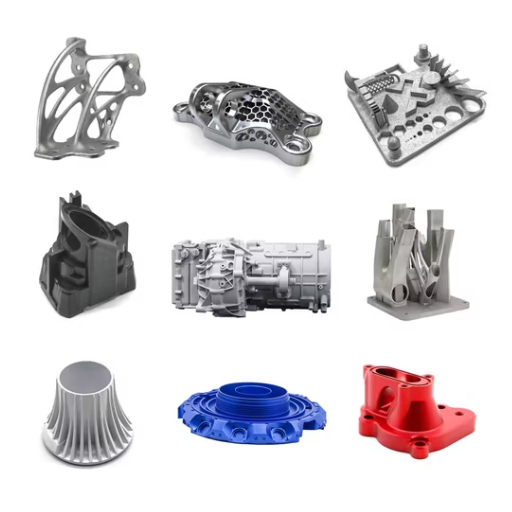Polyoxymethylene Copolymer (POM-C) is a high-performance engineering thermoplastic that is known for having great characteristics and wide-ranging applications. This article aims to present the central aspects of POM-C’s distinct features, the benefits of its manufacturing, and the industries that utilize POM-C. POM-C provides great engineering solutions from a chemical resistance, low friction, high mechanical strength, and outstanding dimensional stability perspective. In addition, we will look into POM-C’s comparisons to other materials, its common use, and its applications in the automotive, consumer, and medical industries. Lastly, the hope is that readers come away with a comprehensive appreciation of POM-C and its relevance with critical and precision applications.
What is POM-C and How is it Used in Engineering Plastics?

POM-C, also known as Polyoxymethylene Copolymer, is a high-grade thermoplastic material with exceptional stiffness, wear resistance, and dimensional stability. It is ideal for precision components under mechanical forces and friction due to its highly crystalline molecular structure. POM-C is extensively used in precise engineering works because of the wide temperature range it can withstand and its excellent resistance to fuels, solvents, and various chemicals. The low frictional coefficient combined with exceptional strength also makes it ideal for a wider variety of precision-engineered components including gears, bushings, bearings, etc. in automotive, electronics, and medical industries.
Understanding POM and its Mechanical Properties
Polyoxymethylene, also called acetal, is a useful high-performance engineering thermoplastic with a wide range of POM’s properties and applications. POM can be used in demanding applications because of its high tensile strength, stiffness, and impact resistance. Even with the hardcore conditions and high-speed operations, POM’s hardness and low surface friction allow it to greatly reduce wear. Not to mention, POM has superior dimensional stability which allows for the integrity and accuracy of critical components to be maintained over a wide temperature range: -40° to 212° F and -40° to 100° C.
Among its mechanical properties, the fatigue resistance of POM is remarkable as it allows an object to withstand repeated loads without deformation. The material also displays remarkable resistance to creep under prolonged stress. Added to these benefits, POM has low moisture absorption which helps avoid any swelling or weakening due to humid or wet conditions. As a result, POM is ideal for precision-engineered components such as gears, cams, bearings, and valve bodies in industries like automotive, consumer electronics, and medical devices. The material’s amazing ability to withstand fuels, solvents, and oils makes it necessary in any incorporation where chemical exposure is inevitable throughout the whole application lifecycle.
Applications of POM-C in Various Industries
POM-C (Polyoxymethylene Copolymer) is a highly versatile material widely used across multiple industries due to its outstanding mechanical properties, chemical resistance, and dimensional stability.
1. Automotive Industry:
POM-C’s high strength, fatigue resistance, and low friction make it indispensable in the automotive sector. It is commonly used for manufacturing gears, bushings, door locks, windshield wipers, and fuel system components. Its resistance to fuels and high temperatures ensures durable performance under harsh operational conditions, driving its widespread adoption in this area.
2. Consumer Electronics:
The material’s excellent insulating properties, wear resistance, and lightweight nature make it integral to several applications in consumer electronics. POM-C is utilized in buttons, switches, and connectors, as well as housings for precision parts like small gears used in appliances such as cameras and printers.
3. Medical Devices:
POM-C meets stringent health and safety standards owing to its low moisture absorption and chemical stability. It is often used in medical applications like drug delivery devices, surgical instruments, and diagnostic equipment components. Its biocompatibility and resistance to sterilizing agents further enhance its utility in this sector.
4. Industrial Machinery:
The high stiffness and dimensional stability of POM-C allow it to function effectively in demanding environments, making it suitable for use in conveyors, bearings, and cams. Its ability to reduce wear under repetitive motion optimizes efficiency in industrial machinery.
By combining these attributes with cost efficiency, POM-C demonstrates its essential role across diverse applications, reinforcing its position as a material of choice in numerous technical and commercial domains.
The Role of Dimensional Stability in POM-C
Polyoxymethylene, also called acetal, is a useful high-performance engineering thermoplastic with a wide range of POM’s properties and applications. POM can be used in demanding applications because of its high tensile strength, stiffness, and impact resistance. Even with the hardcore conditions and high-speed operations, POM’s hardness and low surface friction allow it to greatly reduce wear. Not to mention, POM has superior dimensional stability which allows for the integrity and accuracy of critical components to be maintained over a wide temperature range: -40° to 212° F and -40° to 100° C.
Among its mechanical properties, the fatigue resistance of POM is remarkable as it allows an object to withstand repeated loads without deformation. The material also displays remarkable resistance to creep under prolonged stress. Added to these benefits, POM has low moisture absorption which helps avoid any swelling or weakening due to humid or wet conditions. As a result, POM is ideal for precision-engineered components such as gears, cams, bearings, and valve bodies in industries like automotive, consumer electronics, and medical devices. The material’s amazing ability to withstand fuels, solvents, and oils makes it necessary in any incorporation where chemical exposure is inevitable throughout the whole application lifecycle.
How Does POM-C Compare to Other Plastics Like Homopolymer and Copolymer?

The copolymer variant of polyoxyethylene, POM-C, has a wide range of advantageous features when compared to its homopolymer variant. Regardless of the material in question, the mechanical properties are superb, but POM-C is more custom-suited for aggressive chemical applications because it possesses greater chemical resistance – especially to alkalis and thermal oxidative degradation. Moreover, POM-C has greater dimensional stability, lowers internal stress, and improves machinability which minimizes the chances of warping during the machining process. While the homopolymer, POM-H, exhibits slightly greater strength and stiffness, POM-C is far more versatile because of its balanced thermal and mechanical properties. It is for these reasons that POM-C is the preferred option for a wide range of industrial applications that require durability and stability.
Key Differences Between Homopolymer and Copolymer Acetal
The differences in the structure of homopolymer acetal (POM-H) and copolymer acetal (POM-C) lead to singular performance features as compared to each other. While application in POM-H is best for high-rigidity components, it offers lower mechanical strength, stiffness, and friction. While its higher crystallinity increases strength, dimensional variability under thermal conditions increases which in turn reduces chemical resistance to hot water and alkalis.
Copolimer acetal on the other hand provides better dimensional stability and chemical resistance. Internal stresses are significantly lower reducing chances of warping during machining. Chemically aggressive environments such as bases and continously hot water can be withstood as well. POM-C also outperforms in thermal oxidative resistance, allowing for far more reliable usage during extreme thermal conditions.
Both POM-H and POM-C have their pros and cons. Chemical conditions that are harsh and structural components that are not rigid are where POM-C excels, but hot water and alkalis weaken it. Instead, POM-H is ideal for strong, stiff, chemically resistant, and more thermally stable environments.
Advantages of POM-C in Thermoplastic Applications
There’s a reason why every thermoplastic application prefers POM-C aka copolymer acetals. chemical resistances and thermal strain properties are the icing on the cake for POM-C’s dimensional stability benefits. One of the major advantages of POM-C is that there’s low internal stress meaning there’s a minimum chance of warping while machining, this unique benefit makes POM-C the best for precision engineering components. Furthermore, POM-C also has exceptional chemical resistances meaning that bases, detergents, and even continuous hot water pose no threat to its integrity.
Compared to its counterpart POM-H, POM-C also has improved resistance to thermal oxidative making it much more reliable while operating within extreme temperatures. Conversely, POM-H also has increased resistance to hydrolysis meaning that POM-H’s mechanical properties will remain intact even under extremely humid or wet conditions, making POM-C outperform other plastics. Even better, his low moisture absorption guarantees an uninterrupted reliable performance even under high-density humidity environments. With all these benefits combined, PM-C is the best material for thermoplastic applications that require extreme chemical precision and superb thermal stability.
Better Chemical Resistance of POM-C Compared to Alternatives
POM-C is regarded as one of the best types of thermoplastics available largely due to its superior chemical resistance compared to other alternatives in the market. Other plastics tend to degrade in their structure when subjected to chemical treatment, but POM C will even with low concentrations of acids, alcohols, organic solvents, and bases. Its ability to withstand hot water and detergent for a long period is another vital factor why it is suitable for use in harsh conditions. Moreover, POM-C’s excellent resistance to most oils and greases that are hydrocarbon-based makes it perfect for components that are used in severe chemical conditions.
POM-C is known to have lower moisture intake than nylon or polyethylene which firmly supports its claim. Decreased moisture absorption brings about improved dimensional stability in humid environments, allowing for reliable performance over time. Furthermore, rather than POM-C degrading with extreme chemical conditions like most other plastics do, POM-C’s superior thermal oxidative resistance gives higher performance and longer life in high-heat environments. For industries that need materials with strength and precision in chemical treatment such as the automotive, mechanical engineering, and food industry, POM-C serves to be the best option when it comes to efficiency and durability.
What are the Mechanical Properties of POM-C?

POM-C demonstrates load bearing capabilities alongside having significant tensile strength and stiffness. This along with its low tendency to wear, low friction, and exceptional resistance to impacts, guarantees that it will perform consistently in demanding dynamic situations. In conjunction with being able to resist fatigue, the low temperature performance guarantees its long terms durability. All of these make POM-C extremely suitable for highly complex mechanical and industrial tasks.
Exploring the Tensile Strength of POM-C
Depending on certain grades and processing conditions, polyoxymethylene copolymer (POM-C) displays substantial tensile strength which ranges from 60 MPa to 70 MPa. Its ability to endure tension without deforming makes it ideal for load-bearing applications. In addition to the POM-C having a high tensile strength, it also is stable when stress is repeatedly applied as a form for creeping, ensuring minimal creep and excellent elongation at break. These properties increase the reliability and precision of structural components like gears and bearings. Most importantly, POM-C keeps its tensile strength even when exposed to extreme levels of temperature which makes it integral in dynamic, high-performance engineering tasks.
Importance of Low Friction and Wear Resistance
The low friction coefficient of POM-C has made it a popular element in the world of engineering and other industrial tasks. Having low friction and superb wear resistance are key properties of POM-C. It reduces energy loss along with heat generation during operations which results in higher efficiency in moving parts such as gear systems, conveyor belts, and bearings. Moreover, the material’s exceptional wear resistance guarantees enhanced service life, even in extreme continuous and high-speed contact conditions. These POM-C properties drastically cut down maintenance frequency to reduce operational expenses. The self-lubricated nature of POM-C also improves its motion performance by minimizing the need for additional lubrication, thus enhancing the functioning of dynamic systems. These features enhance its importance in primary components where reliability and durability are crucial.
The Impact of Temperature Range on POM-C Performance
The performance of POM-C is highly dependent on the temperature at which it works. POM-C possesses remarkable mechanical stability across many temperatures, from -40°C to 100°C. This range allows for retention of strength, rigidity, and dimensions, which makes it ideal for precision components. On the other hand, Prolonged exposure to heat (>100°C) will cause thermal degradation and loss in mechanical properties, invoked by a reduction in stiffness and an enhancement in creep.
In contrast, POM-C presents excellent toughness, along with extreme impact resistance at extremely low temperatures, improving its utility in harsh cold environments. Appropriate limits of operating temperatures need to be acknowledged when working with POM-C to ensure efficacy and long-term durability. These properties together create a highly sought-after material for components that have to withstand vastly different thermal conditions.
What is the Molecular Structure of POM-C?

POM-C possesses a high level of crystallinity which gives it extremely good mechanical strength, rigidity, and dimensional stability. Thermoplastic materials that are polyoxymethylene copolymer POM-C have formaldehyde repeating units or oxymethylene groups (-CH2O-) in their composition. The balance between the crystallinity and chemical composition of POM-C allows it to easily occupy multiple precisive applications. Unlike the homopolymer variant, POM-C is more thermally stable and resistant to hydrolysis due to the incorporation of comonomers into its structure.
Understanding the Crystallinity of POM-C
The degree of crystallinity of POM-C is very important in defining its mechanical and thermal properties. POM-C is semi crystalline; that is, it has both amorphous and crystalline phases. The high degree of crystallinity provides POM-C with good stiffness, hardness , and wear resistance. The crystalline phases are formed of well ordered polymer chains, which contributes to good dimensional stability, and low creep deformation under stress. On the other hand, the amorphous regions provide some degree of flexibility and impact resistance.
The use of comonomers incorporates lower degrees of crystallinity within the molecular structure of POM-C as compared to its homopolymer counterpart. Such a change leads to improved thermal stability, and greater resistance to hydrolysis which enables the polymer to be used in environments with high humidity, or exposure to chemicals. The combination of amorphous and crystalline regions also lowers the chances of microcracking, thus increasing its strength. It is very important to understand these phenomena to fully exploit POM-C in different areas of industry including precision gears, automotive components, and parts of medical devices.
The Process of Polymerization in POM-C
The starting step towards the polymerization of POM-C or polyoxymethylene copolymer rests on the polymerization of formaldehyde or its derivatives like trioxanes being used as primary monomers. The substance trioxane can be described as a cyclic trimer of formaldehyde, which can be subjected to controlled ionic or anionic ring-opening polymerization. This process can easily be performed along with a comonomer, for example, ethylene oxide or butanediol formal, which serves the role of displacing the crystallinity of polymer chains. These comonomers tend to modify the crystalline lattice and lower the degree of crystallinity as well as improve the thermal and hydrolysis resistance and the general durability of the polymer.
Molecular weight distributions and the end group’s stability are very important to control during polymerization, which serves as a reason why the process is so controlled. During the polymerization phase acids and bases serve as the most common catalysts, which ensure the reaction’s consistency and polymer chains’ uniformity. After the polymerization stage is reached, the last steps go towards the capping of the open reactive end groups which would otherwise significantly weaken when exposed to thermal stress. In the end, this stabilizing effect gives a material that can withstand high stress and also ensures high dimensional and stiffness stability. With such properties, POM-C can be classified as a polymer that is used for harsh conditions in industries and in mechanical items.
How Formaldehyde is Used in POM-C Production
Polyoxymethylene copolymer POM-C incorporates formaldehyde in its synthesis due to its important function in the polymerization stage. There is a chain of reactions that follows wherein formaldehyde polymerizes to yield polyoxymethylene homopolymer (POM) that later gets altered into a copolymer form (POM-C). This is done by adding comonomers, for instance, ethylene oxide, which serves the purpose of improving the material properties, especially concerning thermal and chemical resistance. Some steps are carried out by using acids or bases as catalysts for controlled chain length and uniformity as well as polymerization regulation. Also, the modification of terminal groups from the formaldehyde used is important to inhibit thermal disintegration during processing and end-use. Overall, the strategy of using formaldehyde makes it possible to obtain high-performance polymers of complex shapes with the toughness and rigidity needed in harsh industrial and mechanical working conditions.
Why Choose POM-C for Dimensional Stability?

Due to its superb resistance to environmentally induced factors like temperature changes and humidity, POM-C is ideal for applications that require long-term dimensional stability. The addition of comonomers in the polymerization step lowers the internal stresses and increases crystallinity which minimizes the shrinkage and deformation over time. Furthermore, POM-C has low moisture absorption and high chemical resistance which adds to its ability to maintain precise dimensions under different operating conditions. With such attributes, POM-C is trustworthy for precision parts and components in the automotive, aerospace, and manufacturing industries.
The Benefits of High Mechanical Strength in POM-C
POM-C demonstrates remarkable mechanical strength, enabling its use in high-level industrial applications. This strength is brought about by its semi-crystalline structure which endows it with exceptional rigidity and resistance to mechanical stress and deformation. In addition, POM-C also possesses high tensile and impact strength, allowing it to support extreme mechanical stress and shock without any fractures. These qualities are further compounded due to its low friction and wear resistance, which guarantees reliability in sliding or moving parts. As a result, POM-C is commonly used in gears, bearings, conveyor parts, and other precision-engineered components that have to endure high mechanical loads in the aerospace, automotive, and general manufacturing industries.
Excellent Dimensional Stability and Low Moisture Absorption
Materials like thermoplastics with PEEK and polyamide-imide have excellent dimensional stability, meaning size and shape remain constant under mechanical and thermal stresses. This makes them very useful in precision engineering mechanics. Their structures also ensure they have low moisture absorption, allowing them to improve the material’s durability and lifespan. These characteristics make them highly suitable across industries such as aerospace, automotive, and manufacture of medical devices where reliability is critical.
Comparing POM-C with Unfilled Acetron and Other Alternatives
POM-C (Polyoxymethylene Copolymer) plastic is well-known in the engineering sector for its low friction, high stiffness, as well as excellent dimensional stability. POM-C’s strength gives it the competitive advantage it needs in precision tasks. The difference between POM-C Unfilled Acetron and other POM-C types is simply branding. Acetron is another type of POM-C with the same core material properties. Due to the abrasion-resistant and low moisture-absorbing qualities both materials possess, they are efficient for industrial use. However, the differences in cost as well as proprietary processing technologies can lead to major differences in value.
When compared to alternatives like nylon and POM-H ( Polyoxymethylene Homopolymer), POM-C tends to have better moisture absorption levels than Nylon, which tends to swell in humid conditions. In addition, POM-C has better impact resistance and is also more thermally durable than its counterparts. POM-H indeed has better tensile strength, but it lacks the cutting stability and uniformity of POM-C. While POM-based plastics are competitively priced, they cannot reach the thermal performance of polyether ether ketone(PEEK) or PTFE. This brings down the cost efficiency of POM-based. Selecting POM-C or alternatives is highly situational as it relies on different application-specific requirements such as budget, environmental exposure, and mechanical loads.
References
Frequently Asked Questions (FAQ)
Q: What is POM-C and where is it commonly used?
A: POM-C, also known as polyacetal copolymer or polyoxymethylene, is a type of acetal copolymer plastic. It is commonly used in applications requiring good mechanical performance, excellent wear resistance, and high stiffness. POM-C is widely utilized in the automotive, consumer electronics, and industrial engineering sectors.
Q: How does POM-C compare to acetal homopolymer?
A: POM-C and acetal homopolymer both offer high rigidity and excellent wear resistance. However, POM-C typically provides better mechanical properties in terms of toughness and impact resistance, especially in applications requiring performance characteristics at lower temperature ranges.
Q: What are the performance characteristics of POM-C plastics?
A: POM-C plastics exhibit excellent wear resistance, high stiffness, and impact resistance. They offer high toughness and good mechanical performance in a wide range of temperatures, making them suitable for various demanding applications.
Q: Can POM-C plastics handle exposure to chemicals?
A: POM-C plastics, including those in the semiconductor-grade category, exhibit good resistance to many chemicals. They perform well in the pH range of 4 to 9, making them suitable for applications that may involve exposure to certain chemicals.
Q: Why are polyacetal copolymers like POM-C preferred in the industry?
A: Polyacetal copolymers such as POM-C are preferred due to their semi-crystalline structure, which offers high mechanical strength, excellent wear resistance, and stability under thermal stress. This makes them ideal for various industrial applications.
Q: What temperature range is POM-C suitable for?
A: POM-C is suitable for a wide range of temperatures, with optimal performance typically observed up to 60°C. This makes it ideal for applications that operate in lower temperature ranges while still requiring good mechanical performance.
Q: How can I get in touch for more information about POM-C plastics?
A: For more information or to discuss specific requirements about POM-C plastics, you can get in touch with our advanced materials division. We are pleased to advise and provide support based on tests performed on our standard products.
Q: Are POM-C plastics interchangeable with other used plastics?
A: POM-C plastics can often be directly interchangeable with other used plastics in similar applications. However, always ensure compatibility based on specific performance characteristics and application requirements.
Q: What is the significance of POM-C being a registered trademark?
A: POM-C being a registered trademark, such as Celanese’s Tecaform® AH, indicates a recognized standard of quality and performance. It assures users of the material’s characteristics and suitability for various applications.







